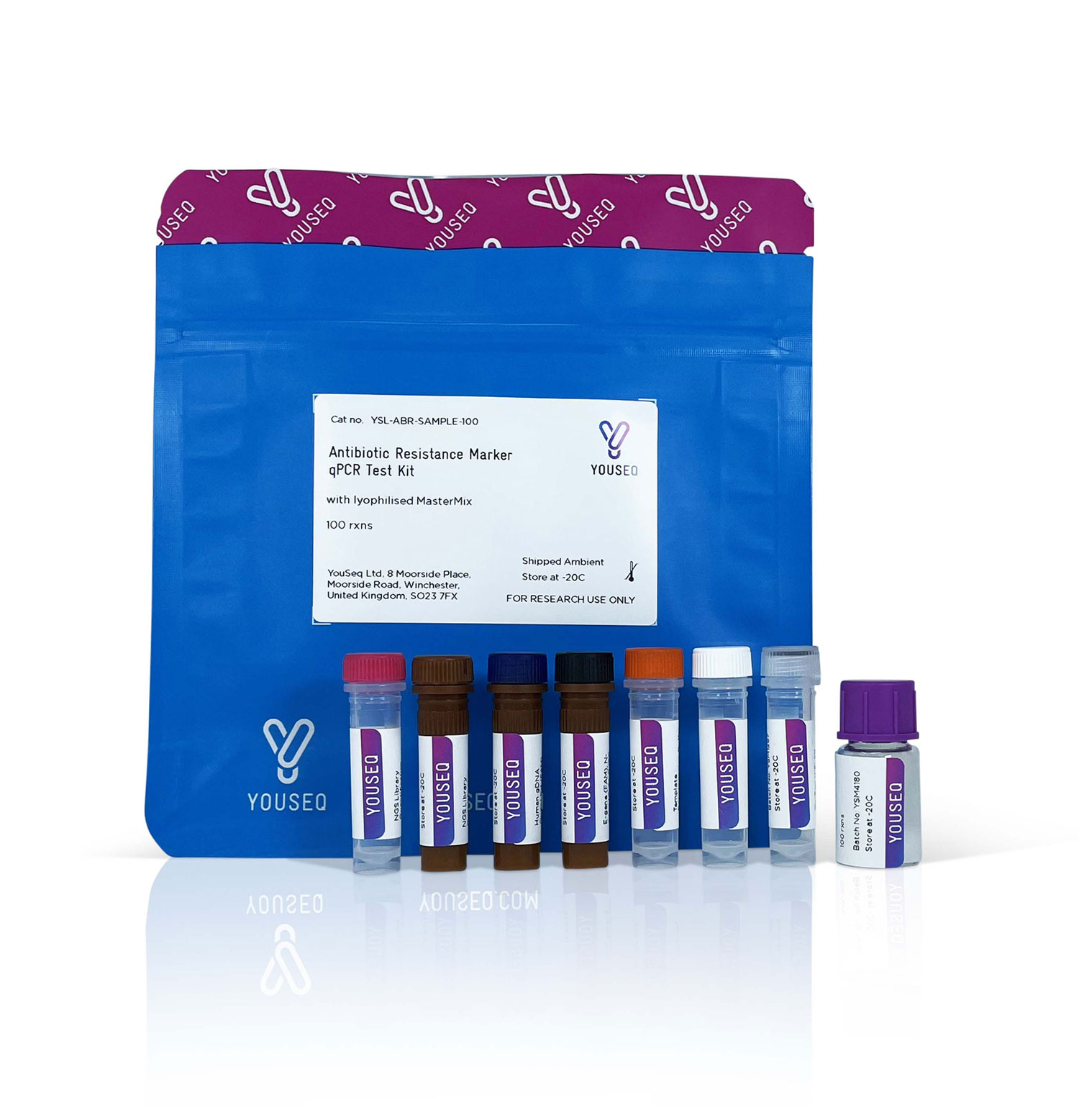
A complete qPCR kit for the detection of Class A beta-lactamase Resistance
Beta-lactamase resistance genes are important targets in the field of antibiotic resistance. These genes can be found in various bacteria, such as Escherichia coli, and can lead to resistance against commonly used antibiotics like penicillins and cephalosporins. Detection of these genes is crucial in both human healthcare settings and the food industry to prevent the spread of resistant bacteria and ensure effective treatment.
YouSeq's qPCR kit to detect beta-lactamase resistance genes allows for sensitive and specific detection of these important targets. Early detection of these genes can help healthcare professionals make informed decisions about antibiotic treatment, ultimately reducing the spread of antibiotic resistance and improving patient outcomes. Detection of beta-lactamase resistance genes in food products can also help prevent the consumption of contaminated food, reducing the risk of foodborne illnesses caused by antibiotic-resistant bacteria.

Price on enquiry
Order nowFor Research Use Only. Not intended for diagnostic use.
Contents
Endogenous control primer/probe
qPCR MasterMix
Positive control template
DNase/RNase free water
Template resuspension buffer
ROX passive reference
Technical specification
Efficiency: 90-110%
Run Time: Approx 1hr30 (dependent on instrumentation)
Target Marker: FAM labelled
Endogenous Control: VIC/HEX labelled
Product variants
YS-ABR-CTXM1-100 : Frozen version for dry ice shipping
Pseudonyms
Beta-lactamase resistant pathogens;superbugs;ESBL;extended spectrum beta-lactamase;carbapenemase-producing organisms;CRE;MDR pathogens;multi-drug resistant bacteria;Gram-negative bacteria;antibiotic-resistant bacteria;ESBL-producing bacteria;carbapenem-resistant Enterobacteriaceae;vancomycin-resistant bacteria;VRE;vancomycin-resistant Enterococcus;MRSA;methicillin-resistant Staphylococcus aureus;VRSA;vancomycin-resistant Staphylococcus aureus;XDR-TB;extensively drug-resistant tuberculosis;pan-resistant bacteria;superbugs;ESKAPE pathogens;ESKAPE bacteria;no-strep pathogens;no-strep bacteria;resistant pathogens;resistant bacteria;multidrug-resistant pathogens;multidrug-resistant bacteria;antibiotic-resistant pathogens;antibiotic-resistant bacteria;drug-resistant pathogens;drug-resistant bacteria;MDRO;multi-drug resistant organisms;multidrug-resistant organisms;antibiotic-resistant organisms;drug-resistant organisms;superbugs;hospital-acquired infections;HAIs;healthcare-associated infections;nosocomial infections;community-acquired infections;CAIs;foodborne pathogens;foodborne bacteria;waterborne pathogens;waterborne bacteria;biofilm-producing bacteria;biofilm-forming bacteria;biofilm-associated infections;chronic infections;persistent infections;recurrent infections;difficult-to-treat infections;resistant infections;resistant strains;antibiotic-resistant strains;drug-resistant strains;MDR strains;multidrug-resistant strains;ESBL strains;carbapenemase-producing strains;CRE strains;VRE strains;MRSA strains;VRSA strains;XDR-TB strains;pan-resistant strains;extensively drug-resistant strains;ESKAPE strains;no-strep strains;antibiotic-resistant infections;drug-resistant infections;resistant infections;resistant bacteria;resistant pathogens;difficult-to-treat infections;hard-to-treat infections;drug-resistant infections;antibiotic-resistant infections;resistant organisms;MDR organisms;multidrug-resistant organisms;antibiotic-resistant organisms;drug-resistant organisms;antibiotic resistance;drug resistance;resistance mechanisms;beta-lactamase resistance;carbapenem resistance;carbapenemase resistance;extended beta-lactamase resistance;extended-spectrum beta-lactamase resistance;ESBL resistance;resistant mechanisms;antibiotic-resistant mechanisms;drug-resistant mechanisms;resistance gene;resistant gene;antibiotic-resistant gene;drug-resistant gene;resistance transmission;antibiotic resistance transmission;drug resistance transmission;resistant factor;multi-drug resistance;multidrug resistance;antibiotic resistance;drug resistance;antimicrobial resistance.